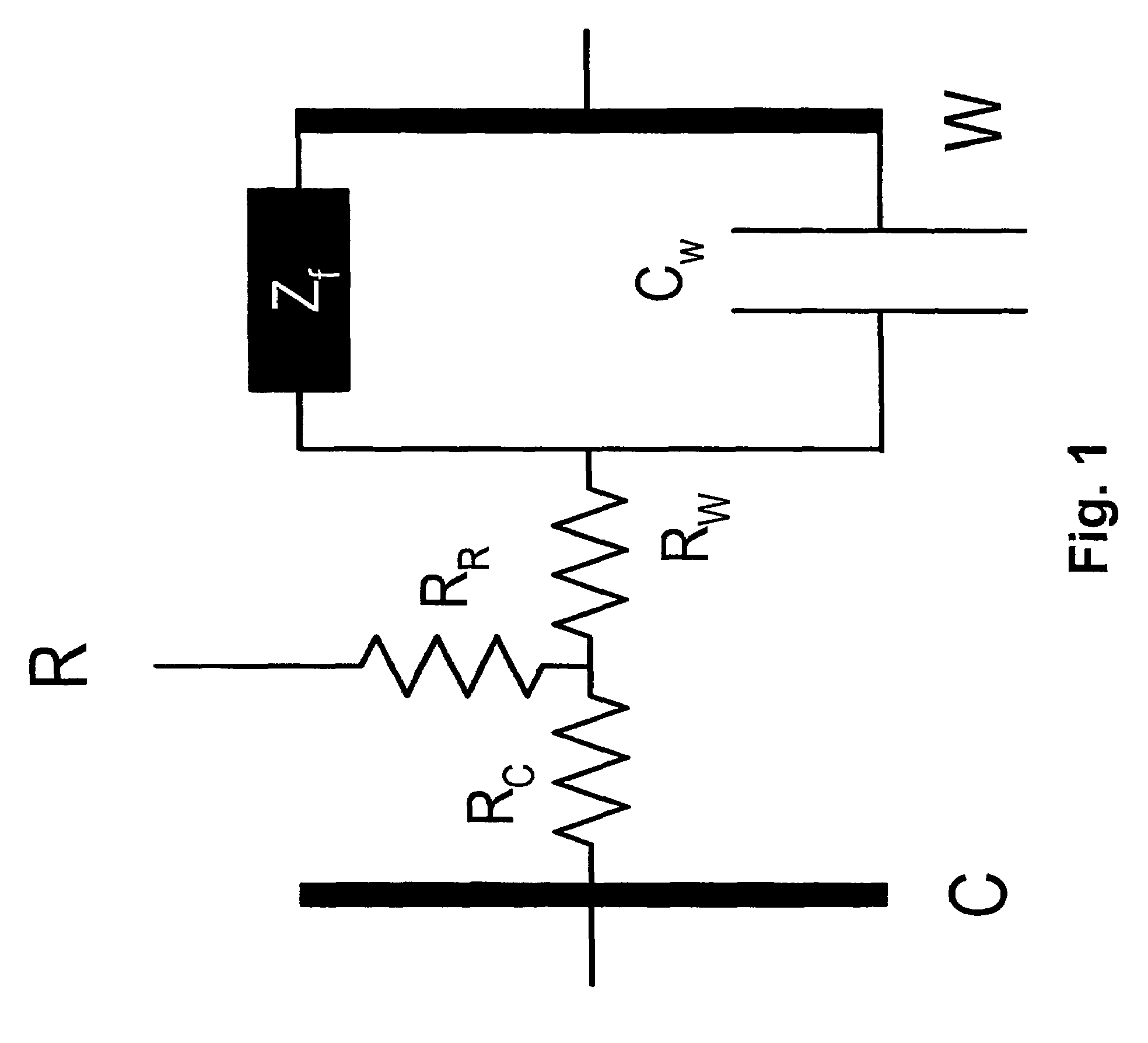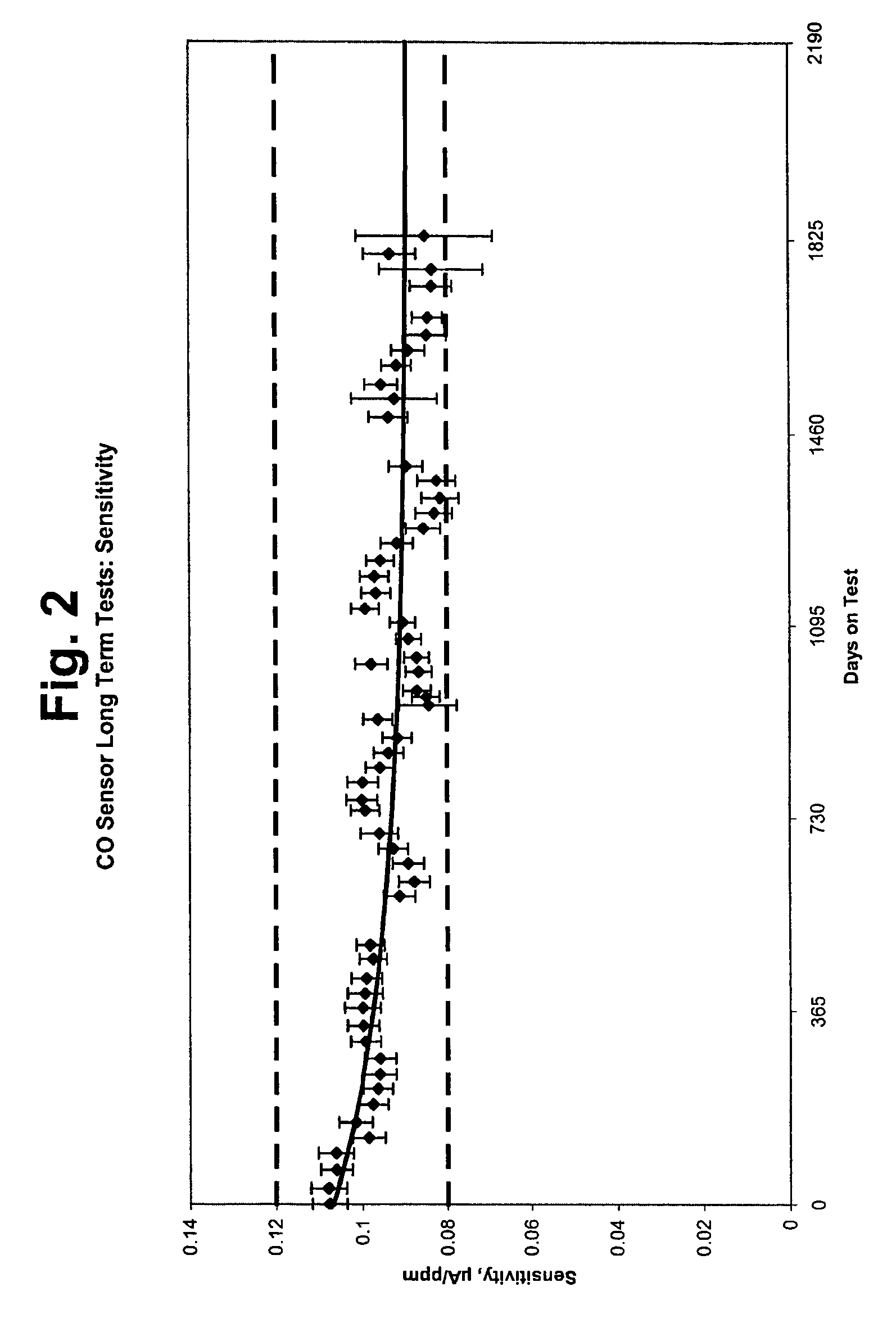Devices, systems and methods for testing gas sensors and correcting gas sensor output
a technology of gas sensor and output, applied in the direction of liquid/fluent solid measurement, electrochemical variables, instruments, etc., can solve the problems of self-consistent, analytically incorrect indication of sensor health, complex and ambiguous,
- Summary
- Abstract
- Description
- Claims
- Application Information
AI Technical Summary
Benefits of technology
Problems solved by technology
Method used
Image
Examples
Embodiment Construction
[0032]As a result of its structure, a fuel cell-type electrode can be modeled by reference to common analog electronic components, such as resistors and capacitors. An equivalent circuit that is commonly used to describe the behavior of electrochemical cells is shown in FIG. 1. See, for example, P. T. Kissinger and W. R. Heineman, eds., Laboratory Techniques in Electroanalytical Chemistry, New York: Marcel Dekker, Inc. (1984) and A. J. Bard and L. R. Faulkner, Electrochemical Methods: Fundamentals and Applications, New York: John Wiley and Sons (1980).
[0033]As illustrated in FIG. 1, a sensor can be described as resistance and capacitance in series. The resistance RR resulting from the reference electrode of FIG. 1 is not part of the current path of the analytical signal of the sensor. The resistive portion of this circuit is primarily a result of the solution (ionic) resistance of the electrolyte interspersed between the working electrode (RW) and the counter electrode (RC). The cap...
PUM
| Property | Measurement | Unit |
|---|---|---|
| current | aaaaa | aaaaa |
| voltage | aaaaa | aaaaa |
| surface-area | aaaaa | aaaaa |
Abstract
Description
Claims
Application Information
 Login to View More
Login to View More - R&D
- Intellectual Property
- Life Sciences
- Materials
- Tech Scout
- Unparalleled Data Quality
- Higher Quality Content
- 60% Fewer Hallucinations
Browse by: Latest US Patents, China's latest patents, Technical Efficacy Thesaurus, Application Domain, Technology Topic, Popular Technical Reports.
© 2025 PatSnap. All rights reserved.Legal|Privacy policy|Modern Slavery Act Transparency Statement|Sitemap|About US| Contact US: help@patsnap.com



